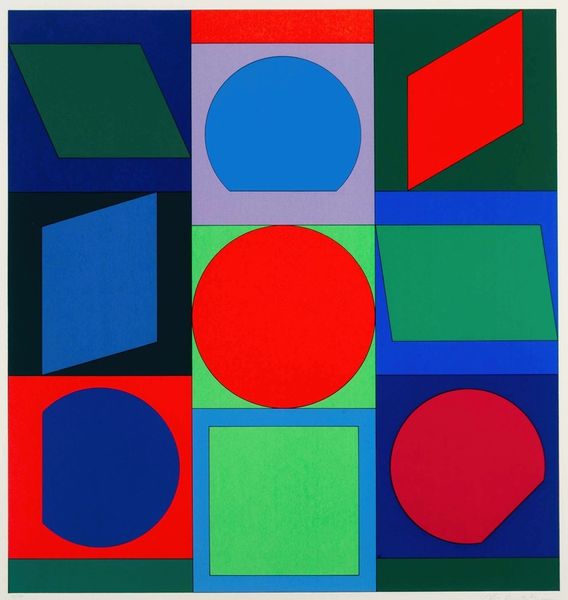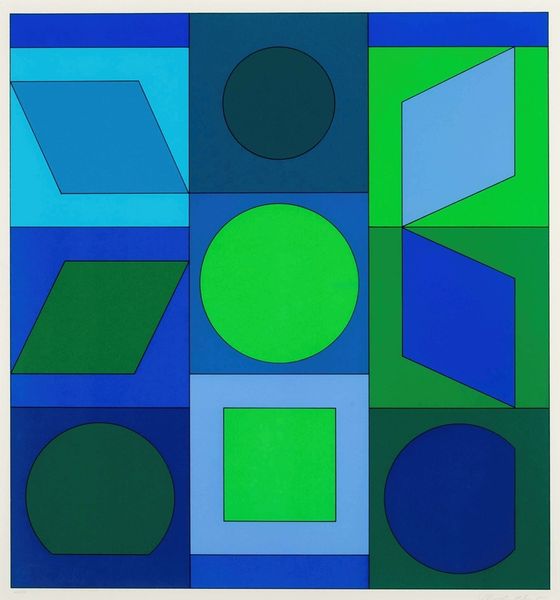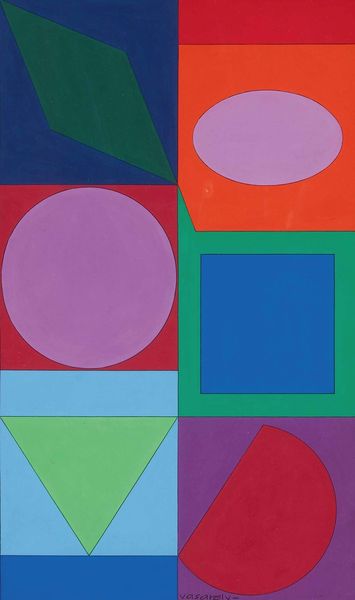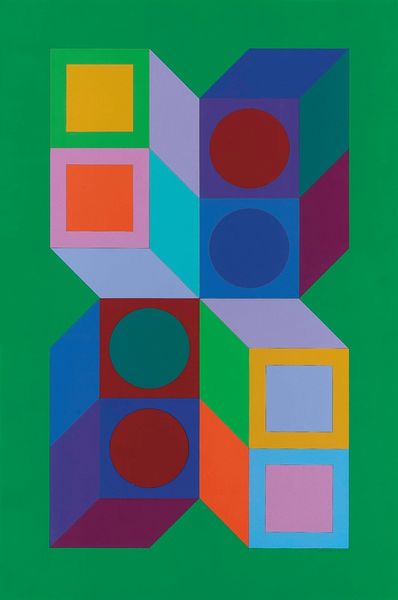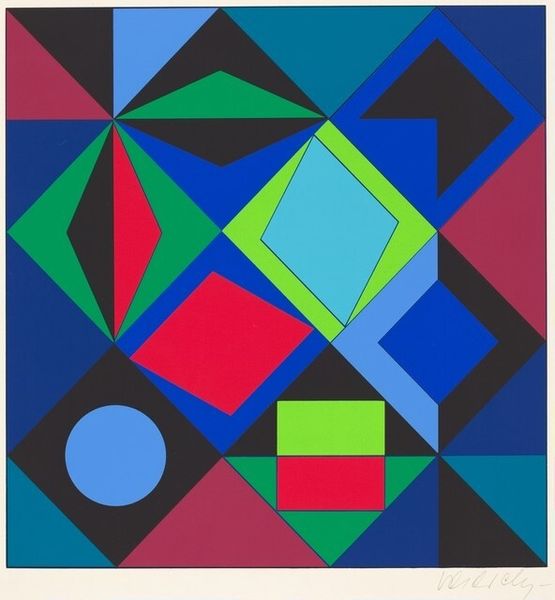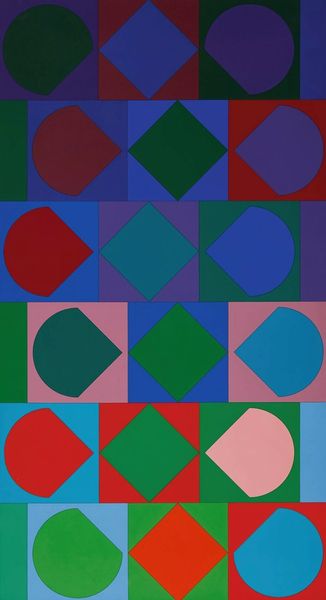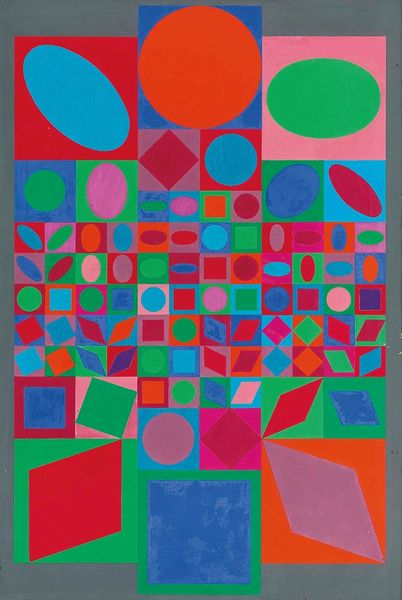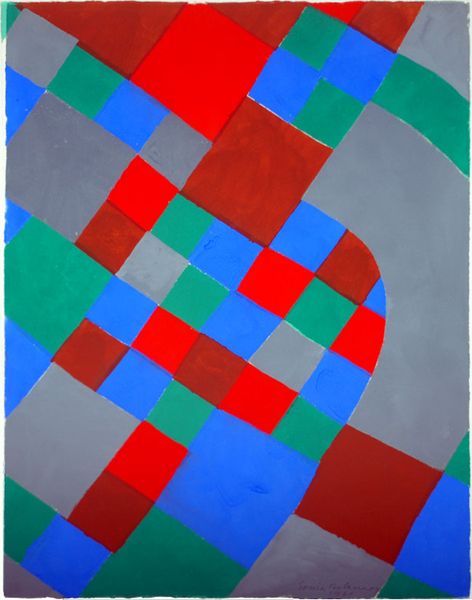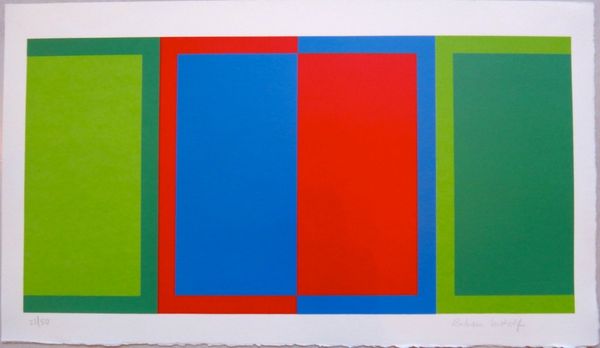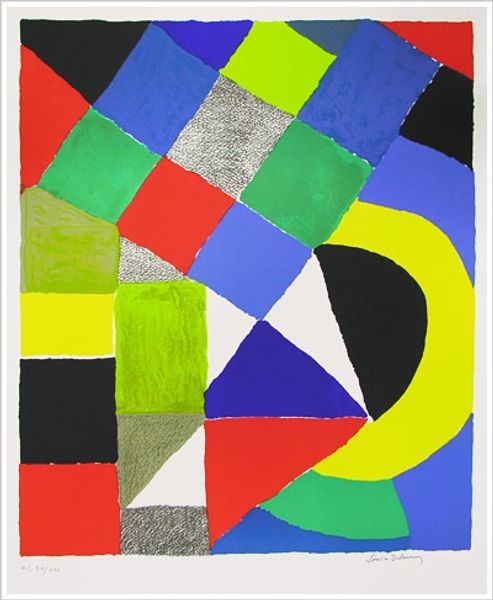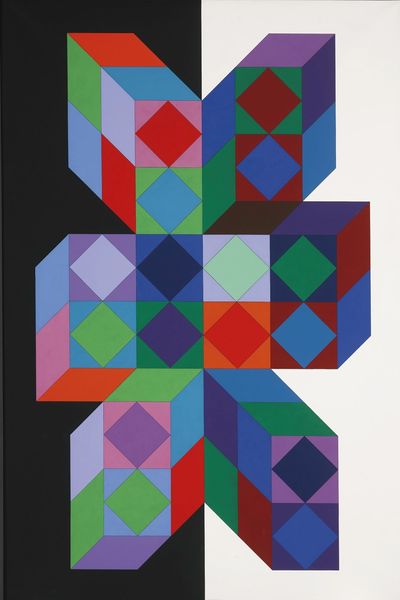
mixed-media, print
#
mixed-media
#
op-art
# print
#
pop art
#
abstract
#
geometric
#
abstraction
#
digital-art
#
modernism
Copyright: Modern Artists: Artvee
Victor Vasarely made "Korund" as part of his "Album Lapidaire," using screen printing, a technique favored for its ability to produce crisp lines and flat colors. Vasarely, a key figure in the Op Art movement, explored how abstract forms and colors could create visual illusions. "Korund," with its geometric shapes and vibrant hues, embodies this interest. But beyond mere optical trickery, Vasarely was interested in a democratic art. His embrace of printmaking reflects a desire to make art accessible to a wider audience. In the post-war era, marked by technological advancements and social change, art institutions grappled with questions of accessibility and relevance. Vasarely's work, with its emphasis on geometric abstraction, challenged traditional notions of artistic skill and authorship. Historians study manifestos, exhibition reviews, and other documents to understand the context in which artists like Vasarely operated. Art is never created in a vacuum. It is a product of specific social, cultural, and institutional forces.
Comments
No comments
Be the first to comment and join the conversation on the ultimate creative platform.
